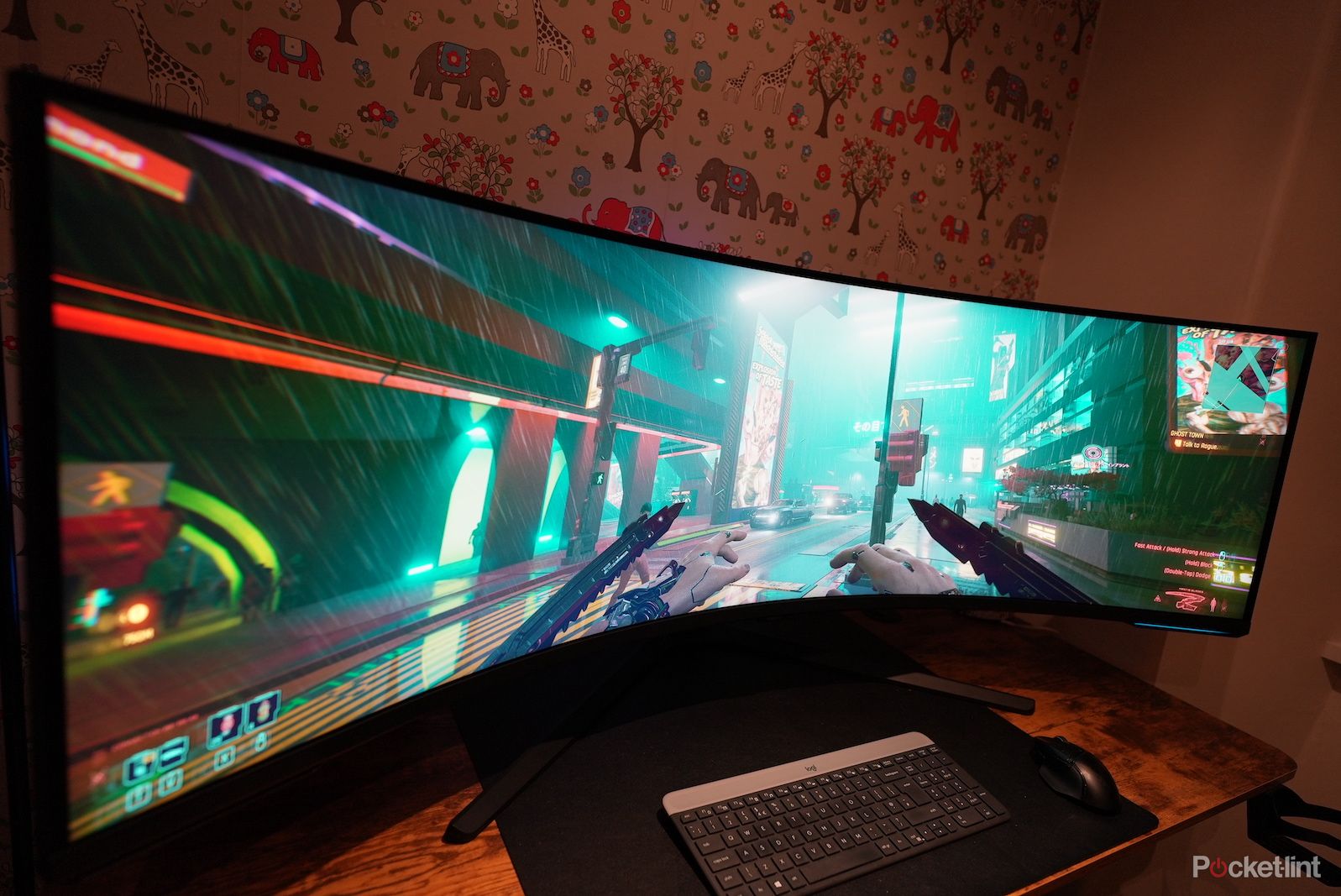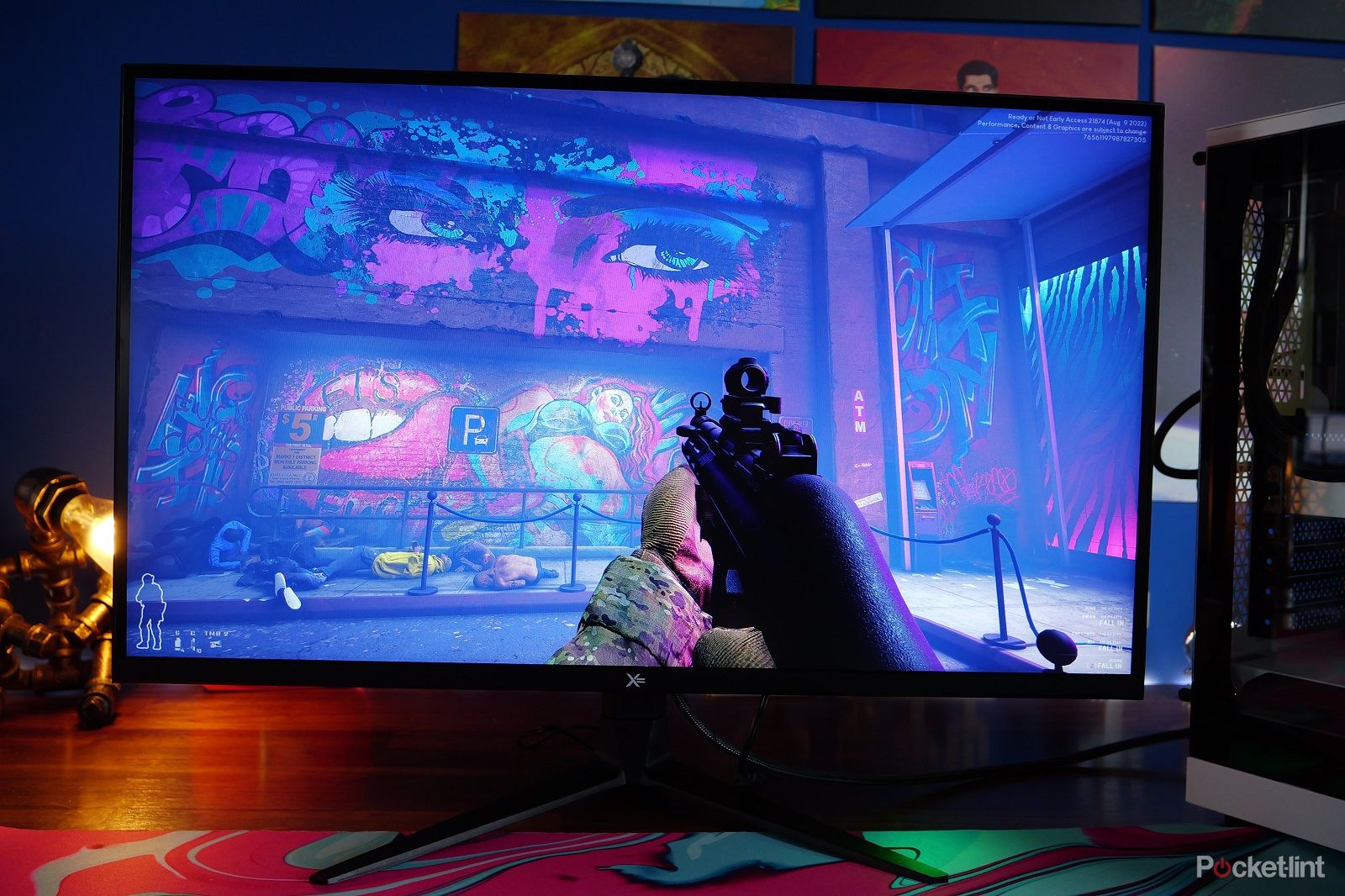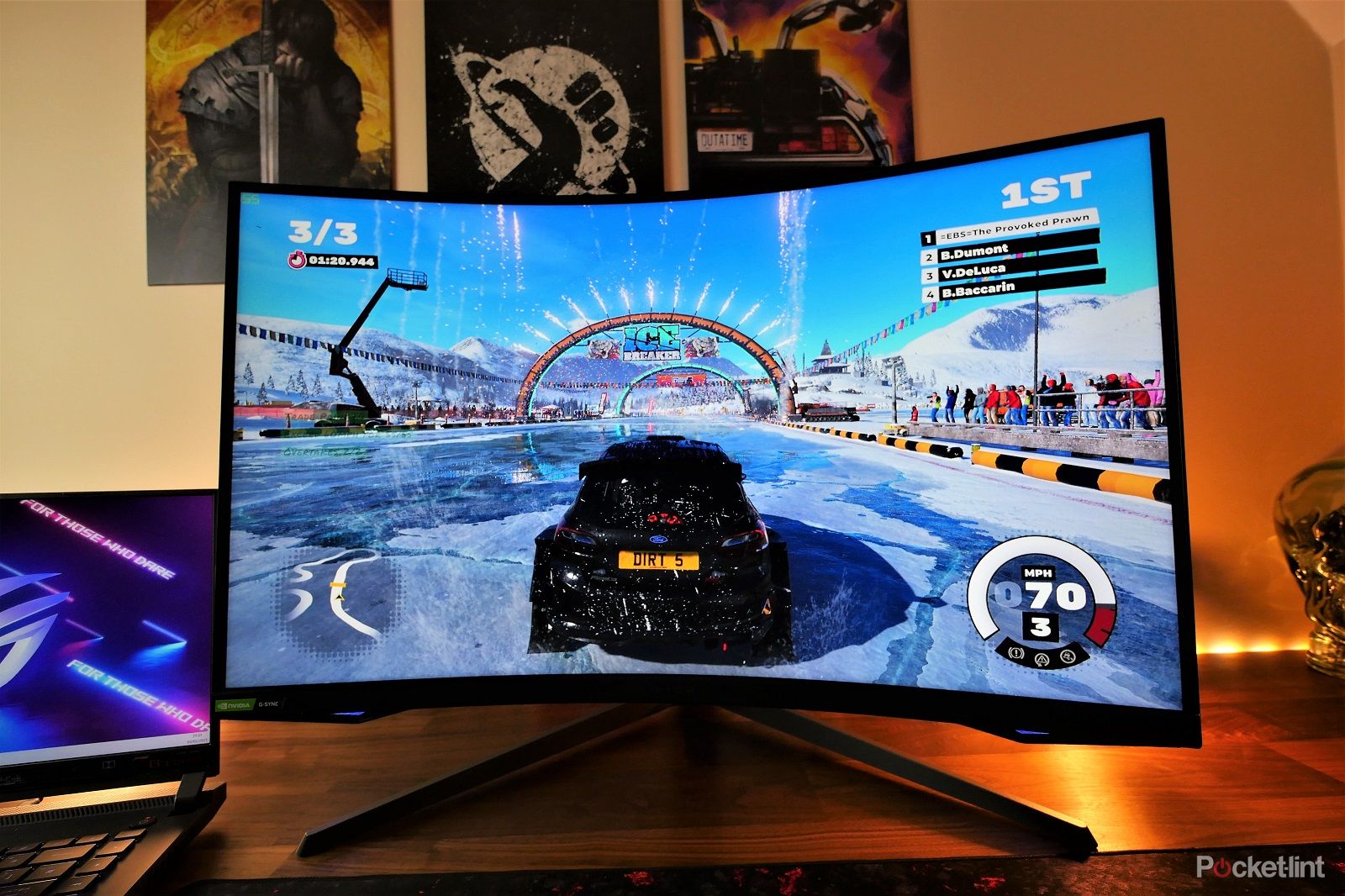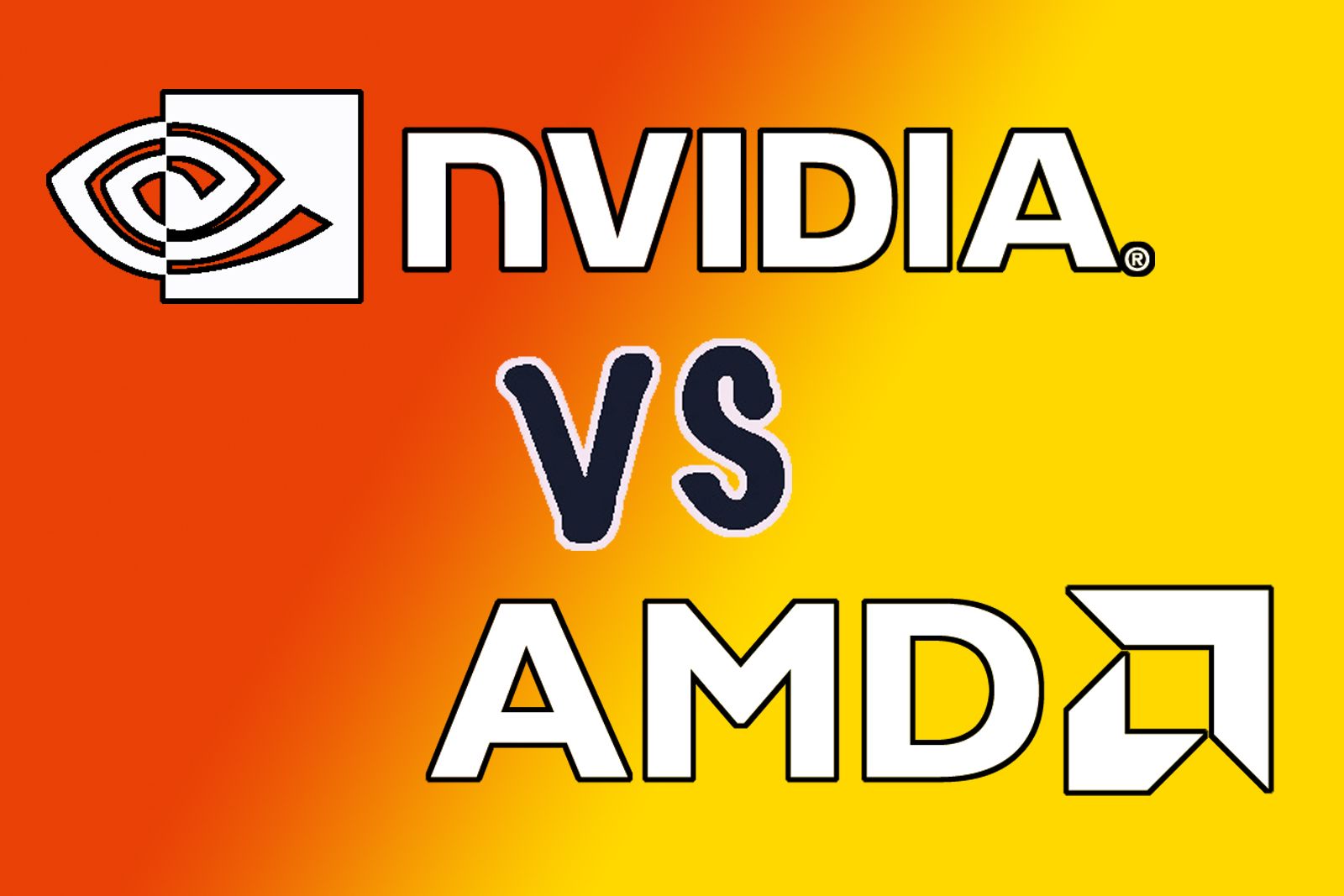Nvidia G-Sync and AMD FreeSync are two Variable Refresh Rate (VRR) technologies that eliminate screen tearing while gaming by dynamically adapting your monitor’s refresh rate to match the game’s framerate. There’s a history of back-and-forth between the two technologies, with Nvidia and AMD competing to outdo one another. These days, the differences between the two technologies are few and often small — but not nonexistent.
In this guide, we’ll explain exactly what G-Sync and FreeSync are, what benefits they offer gamers, and how you can decide which one is best for you.
How to enable G-Sync on your gaming PC and monitor
If you have an Nvidia graphics card and a compatible gaming monitor then Nvidia G-Sync can help give you a smoother experience.
What is Nvidia G-Sync and what does it do?
Nvidia G-Sync aims to fix screen tearing and provide a smoother gaming experience on compatible monitors by synchronizing refresh rates to current in-game framerates. This is often called variable refresh rate (VRR) technology.
Traditional monitors’ refresh rates are fixed, which means they refresh the displayed image at a constant rate, such as 60Hz (60 times per second). However, a game’s frame rate — the number of times, per second, that it renders a new game image — can vary, often leading to your monitor and graphics card being out of sync.
This can cause screen tearing which is where, within a single screen refresh, your monitor simultaneously displays portions of multiple frames, appearing as a visual tear horizontally across your screen.
G-Sync addresses this issue by dynamically adjusting the monitor’s refresh rate to synchronize it with a game’s frame rate. It requires a G-Sync or G-Sync Compatible monitor plus an Nvidia graphics card. With G-Sync enabled, your monitor’s refresh rate dynamically adjusts to match the frame rate sent to the display by the graphics card. This gives you smoother gameplay without screen tearing.

Best gaming monitors: Top 4K, ultrawide and ultra fast monitors to buy
A great monitor can be a huge upgrade for your PC, whether for gaming or work – these are our favourites.
G-Sync can also reduce input lag and provide a more responsive gaming experience because it ensures that the correct frame is displayed at the right time, soon after your mouse- or key-press. And if you’re switching from VSync to G-Sync, you might find that games stutter less, too, because VSync can cause frame stutters when there’s too much framerate variation.
G-Sync compatibility with G-Sync Ultimate
Nvidia G-Sync and G-Sync Ultimate monitors are ones that have a proprietary Nvidia chip built into them to communicate with G-Sync software and handle the dynamic refresh rate adjustments. G-Sync Compatible monitors, however, are ones that don’t require this proprietary chip.
G-Sync Compatible monitors are ones that can dynamically adjust refresh rates over DisplayPort simply by direction from the GPU, without any in-display chip. They use VESA’s free and open Adaptive-Sync standard, but to get the “G-Sync Compatible” stamp, they also require another layer of Nvidia testing to confirm they offer a great VRR experience with Nvidia GPUs using G-Sync software.
G-Sync Ultimate montiors are ones that (unlike G-Sync Compatible monitors) use the proprietary Nvidia chip to handle refresh rate synchronization and also have some extra verified features such as HDR support.
Nvidia G-Sync Pulsar
Pulsar is Nvidia’s latest advancement and addition to its G-Sync standard. Nvidia says:
G-Sync Pulsar is the next evolution of Variable Refresh Rate (VRR) technology, not only delivering a stutter-free experience and buttery smooth motion, but also a new gold standard for visual clarity and fidelity through the invention of variable frequency strobing.
Nvidia G-Sync Pulsar significantly improves what Nvidia calls “effective motion clarity”, which means less motion blur and ghosting on fast-moving objects.
Motion blur can be caused by slow LCD pixel transitions, and this can be fixed by enabling Variable Overdrive on supported monitors. Motion blur can also be caused by “object permanence in the eye”, which is usually fixed by backlight strobing when Ultra Low Motion Blur is enabled on G-Sync monitors.
However, backlight strobing has, until now, not worked with G-Sync VRR, as it requires a fixed refresh rate to prevent stuttering.
G-Sync Pulsar is Nvidia’s solution to this. Thanks to a “novel algorithm that dynamically adjusts strobing patterns to varying render rates”, G-Sync monitors which support Pulsar will be able to strobe the backlight to drastically reduce motion blur on fast-moving objects, all while G-Sync is enabled. This should make gameplay appear much smoother in games where there are fast-moving objects.
 What is AMD FreeSync and what does it do?
What is AMD FreeSync and what does it do?
AMD FreeSync, like G-Sync, aims to synchronize your computer display’s refresh rate with the game frame rate given to it by the GPU, eliminating screen tearing and allowing for smoother gameplay.
FreeSync, like G-Sync Compatible, uses VESA’s Adaptive-Sync standard to dynamically adjust refresh rates over DisplayPort by direction from the GPU, with no in-display chip requirement.

How to check your monitor’s refresh rate and adjust it
If you’re trying to make the most of your gaming PC, then you need to make sure you’re also getting the most from your monitor.
Three versions of FreeSync are available: FreeSync, FreeSync Premium, and FreeSync Premium Pro. FreeSync monitors are validated to offer low latency, low flicker, and tear-free Adaptive-Sync capabilities. Both FreeSync Premium and Premium Pro monitors are, on top of this, validated to offer a minimum refresh rate of 120Hz and low frame rate compensation, and Pro monitors, like G-Sync Ultimate ones, are also validated to support HDR.
You don’t need an AMD GPU to use FreeSync, either, providing you’re using an Nvidia GeForce 10-series card or later. Although, there’s less likely to be any issues if you stick to an AMD GPU for FreeSync and an Nvidia GPU for G-Sync.
Currently, there’s no FreeSync equivalent to Nvidia G-Sync Pulsar.
Nvidia G-Sync vs AMD FreeSync: Featured compared
G-Sync and FreeSync are both technologies used by GPUs and gaming monitors to eliminate or fix screen tearing and provide a smoother gaming experience. However, there are key differences between the two technologies.
|
G-Sync |
FreeSync |
|
|---|---|---|
|
Required GPU |
Nvidia |
AMD or Nvidia (post-10-series) |
|
Connector |
DisplayPort |
DisplayPort, and rarely HDMI |
|
Chip-less VRR |
Yes, with G-Sync Compatible |
Yes |
|
HDR |
Yes, if G-Sync Ultimate |
Yes, if FreeSync Premium Pro |
|
Low framerate compensation (LFC) |
Yes |
Yes |
|
VRR with backlight strobing |
Yes |
No |
|
Dual-mode compatible |
Yes, if G-Sync Ultimate* |
Yes, if FreeSync Premium Pro* |
*This is unconfirmed but probably the case. Because G-Sync Compatible, G-Sync Ultimate, and all FreeSync tiers adhere to VESA’s Adaptive-Sync standard, they should be compatible with the new dual-mode refresh rate monitors. We expect Nvidia and AMD to list this feature as a premium one, though, and give dual-mode monitors G-Sync Ultimate and FreeSync Premium Pro badges.
What is VESA Adaptive-Sync?
In 2014, not long after Nvidia introduced its own proprietary chip-accelerated G-Sync VRR tech, the Video Electronics Standards Association (VESA) published a white paper (PDF) outlining an open standard for VRR technology called Adaptive-Sync.
While Adaptive-Sync tech existed from 2009 onwards and could be used over embedded DisplayPort (eDP), in 2014 the technology was added to new DisplayPort (DP) standards.
Any monitor that used the new DisplayPort specification and adhered to its latest Adaptive-Sync standards would be capable of achieving a variable refresh rate without the use of an extra physical chip inside the monitor.
Any monitor that adheres to the standards VESA outlined and passes Adaptive-Sync compliance testing is a monitor that’s officially capable of Adaptive-Sync, and can have a logo to prove it.
G-Sync Compatible and FreeSync monitors are ones that adhere to this standard, but also use AMD’s and Nvidia’s own graphics software (FreeSync in AMD’s case and G-Sync in Nvidia’s) to allow the GPU to dictate the monitor’s refresh rate based on the current in-game frame rate.
Some G-Sync and G-Sync Ultimate monitors, in addition to supporting G-Sync thanks to a hardware scaler, also adhere to the Adaptive-Sync standard and therefore support FreeSync.
In other words, Adaptive-Sync means the monitor can adjust its refresh rate on the fly, and FreeSync or G-Sync Compatible means this refresh rate can match an in-game framerate.
Dual-mode monitor support
On Jan. 3, 2024, VESA announced that there’s a new Adaptive-Sync specification for dual-mode monitors. Dual-mode monitors, which are very new, can have two different refresh rates depending on which resolution they’re set to use.
For instance, the Asus ROG Swift OLED PG32UCDP can support up to 240Hz at 4K and up to 480Hz at 1080p. This is beneficial because it means you can have an ultra-high refresh rate for 1080p competitive gaming, but still play at 4K if you simply lower your refresh rate. Previously, gamers often had to choose between a high resolution monitor, or a high refresh rate monitor — this gives you the best of both worlds.
VESA’s announcement that Adaptive-Sync will support this new kind of monitor means that G-Sync Compatible and FreeSync VRR tech should work with them, meaning refresh rates on these monitors should be able to dynamically adjust regardless of which of their two maximum refresh rates are active.
Is a VRR monitor worth it?
While there might have been some disadvantages to G-Sync or FreeSync during the early days of VRR tech adoption, these days there’s little reason not to opt for a G-Sync or FreeSync monitor unless you’re on a strict budget.
There’s very little risk of compatibility or other issues with G-Sync and FreeSync monitors, providing you have a modern AMD or Nvidia GPU.
But, admittedly, while costs have dropped significantly, non-VRR-capable monitors will still be cheaper than VRR-capable ones. So, if you’re on a tight budget, you might have to go without G-Sync or FreeSync.
Which is right for you: Nvidia G-Sync or AMD FreeSync?
Nvidia G-Sync and AMD FreeSync are both VRR technologies that do a very good job at eliminating screen tearing. While it’s true that in early days of the technologies’ adoption, there might have been significant differences between the performance of the two, these days there’s little difference.
When comparing G-Sync Compatible to all FreeSync tiers, there’s very little difference, practically, between the two solutions. Both adhere to VESA’s open Adaptive-Sync standard, and both add their own roughly comparable validation tests into the mix. And this DisplayPort tech has gotten so good that there’s little difference between it and full-fledged hardware-accelerated G-Sync today.
The addition of G-Sync Pulsar, however, could turn things in G-Sync’s favor, though, as the ability to use ULMB to reduce motion blur while having G-Sync enabled is impressive. That is, until AMD offers its own alternative.
Ultimately, though, whether you choose G-Sync or FreeSync will probably come down to which GPU you own. While AMD cards usually work with G-Sync Compatible monitors and Nvidia cards usually work with FreeSync monitors, there’s less risk of compatibility issues when sticking with FreeSync for an AMD GPU or G-Sync for an Nvidia GPU.
Trending Products

Cooler Master MasterBox Q300L Micro-ATX Tower with Magnetic Design Dust Filter, Transparent Acrylic Side Panel, Adjustable I/O & Fully Ventilated Airflow, Black (MCB-Q300L-KANN-S00)

ASUS TUF Gaming GT301 ZAKU II Edition ATX mid-Tower Compact case with Tempered Glass Side Panel, Honeycomb Front Panel, 120mm Aura Addressable RGB Fan, Headphone Hanger,360mm Radiator, Gundam Edition

ASUS TUF Gaming GT501 Mid-Tower Computer Case for up to EATX Motherboards with USB 3.0 Front Panel Cases GT501/GRY/WITH Handle

be quiet! Pure Base 500DX ATX Mid Tower PC case | ARGB | 3 Pre-Installed Pure Wings 2 Fans | Tempered Glass Window | Black | BGW37

ASUS ROG Strix Helios GX601 White Edition RGB Mid-Tower Computer Case for ATX/EATX Motherboards with tempered glass, aluminum frame, GPU braces, 420mm radiator support and Aura Sync











